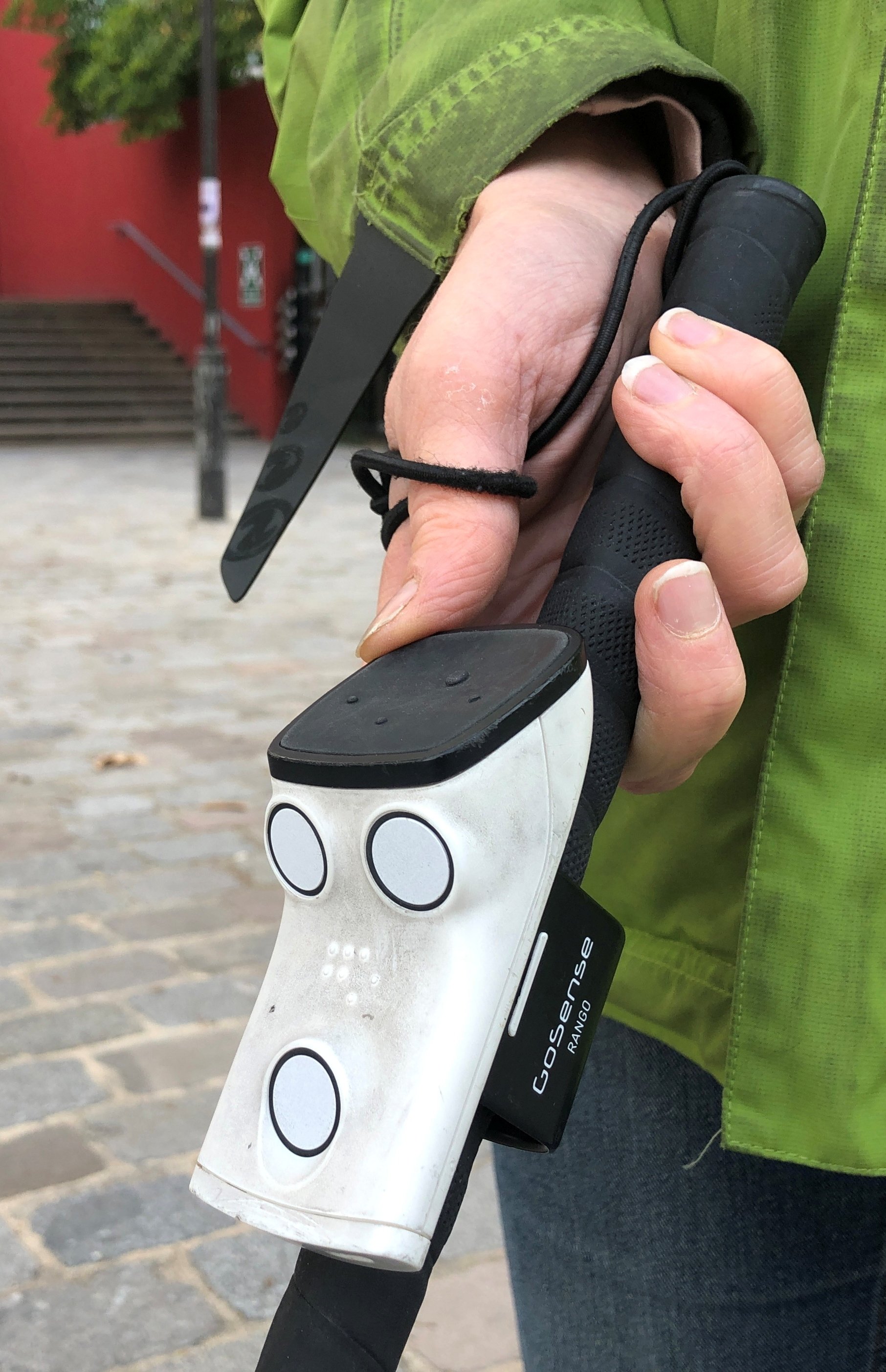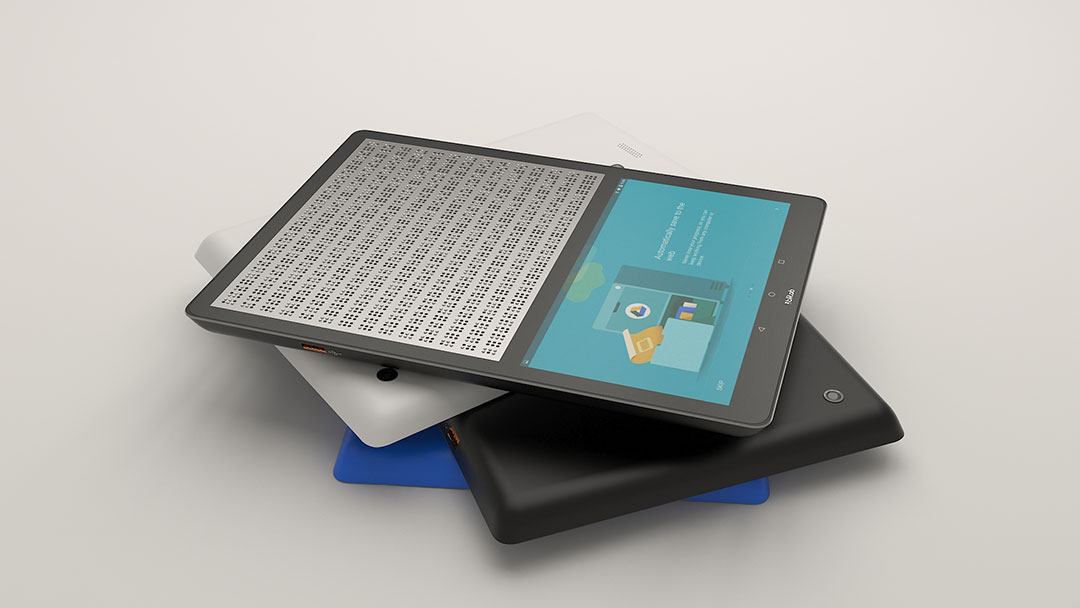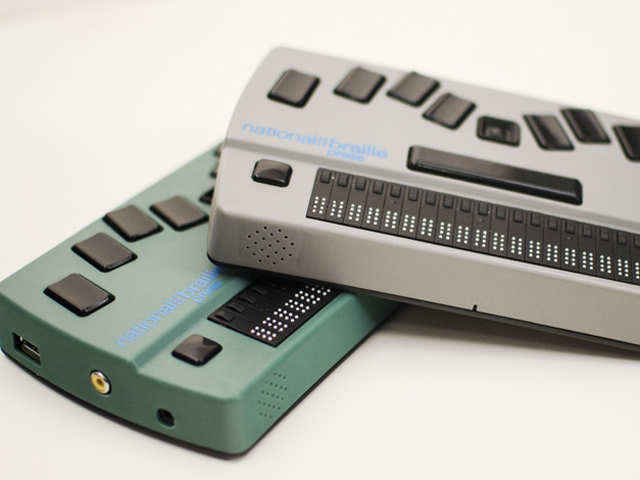Discover Innovative Devices Developed for the Aesthetically Damaged
The advancement of ingenious devices for the visually damaged stands for a considerable innovation in accessibility and freedom. Technologies such as clever glasses with AI capabilities and mobile applications developed to offer acoustic summaries are reshaping daily experiences for users. Additionally, wearable tools that employ haptic responses improve ecological recognition, while modern Braille advancements provide new methods to involve with message. As these devices remain to evolve, their effect on the lives of those with visual problems increases essential inquiries regarding the future of inclusivity and autonomy in various elements of life. What lies in advance in this technical landscape?
Smart Glasses for Navigating

Smart glasses made for navigating are transforming the means visually impaired people communicate with their setting. These sophisticated devices use a mix of camera technology, man-made intelligence, and acoustic comments to offer real-time details regarding environments. By employing obstacle detection systems, smart glasses can alert individuals to potential dangers, allowing much safer wheelchair in both familiar and unfamiliar setups.
The assimilation of GPS modern technology even more boosts navigating capacities, enabling users to receive acoustic instructions as they move. This hands-free approach not just cultivates freedom yet likewise empowers aesthetically damaged individuals to navigate metropolitan landscapes with raised confidence. Additionally, numerous clever glasses are equipped with attributes that recognize landmarks and road indications, providing contextual information that enhances the customer experience.
In addition, the growth of these devices is consistently progressing, with firms functioning to enhance the accuracy of item recognition and increase the variety of navigational attributes. As wise glasses become much more budget friendly and available, they hold the potential to considerably transform day-to-day live for visually damaged individuals. Ultimately, these innovative devices represent a crucial action toward inclusivity, offering enhanced flexibility and a higher sense of freedom for people browsing the globe around them.

Mobile Application for Daily Living
Just how can mobile applications boost the every day lives of aesthetically impaired people? Mobile apps are changing the means aesthetically damaged individuals navigate their atmospheres, handle daily tasks, and accessibility information. These applications supply necessary assistance through various functionalities, promoting self-reliance and enhancing lifestyle.
Several cutting-edge mobile apps are made particularly for everyday living. For example, apps like Be My Eyes attach aesthetically impaired individuals with sighted volunteers by means of video clip phone calls, permitting them to obtain real-time help with tasks such as reviewing tags or navigating strange spaces. Seeing AI, developed by Microsoft, uses man-made knowledge to describe surroundings, read message, and recognize objects, properly changing a mobile phone right into a powerful device for daily aid.
In addition, navigation applications customized for the visually impaired, such as Aira and BlindSquare, use audio-based instructions and ecological details, making it possible for customers to traverse their surroundings safely and with confidence. Beyond navigation and prompt aid, mobile applications additionally support company and task administration, with features that help users set suggestions, create to-do checklists, and track visits. In summary, mobile applications act as vital sources, empowering aesthetically damaged people to lead more independent and satisfying lives.
Wearable Technologies for Help
Empowerment via modern technology is increasingly apparent in the world of wearable gadgets developed to aid visually impaired individuals. These ingenious devices integrate perfectly into every day life, boosting navigating and offering crucial feedback to users. Wise glasses furnished with electronic cameras can check out and recognize faces click here now message out loud, permitting users to connect even more with confidence in professional and social setups.
One more significant development is making use of haptic responses systems in wearable devices. These systems use vibrations or various other tactile signals to convey info regarding the user's atmosphere, such as challenges or modifications in surface, boosting mobility and safety and security. Wearable modern technologies likewise consist of wristbands that connect to smart devices, informing customers to notices via refined vibrations, thus improving connectivity without dependence on visual hints.
As these modern technologies proceed to progress, they are not only improving self-reliance for visually impaired individuals however likewise cultivating a better sense of inclusion in society. By bridging the gap in between obstacles dealt with in day-to-day living and the capacity for freedom, wearable technologies act as pivotal tools in the mission for equal rights and empowerment for those with visual disabilities.
Audio Description Tools
Sound description tools play an essential duty in boosting accessibility for visually impaired individuals, offering them with the ability to involve with visual media. Mobility aids for visually impaired users. These tools provide narrated summaries of vital visual aspects in films, television shows, and live efficiencies, making certain that users can completely comprehend the context and emotions communicated with visuals
Audio summary can be integrated right that site into various systems, including streaming solutions, cinema testings, and live theater. Numerous popular streaming solutions now consist of audio summary as an ease of access feature, enabling viewers to choose it quickly. Along with conventional media, specialized applications also exist, giving audio summaries for art events, galleries, and other cultural occasions.
The efficiency of audio description depends upon the ability of the storytellers, who must share visual information succinctly without taking away from the initial sound. Technologies in this area are likewise paving the way for even more tailored experiences, where individuals can change the level of information and pacing according to their preferences.
Braille Innovations and Gadgets
Braille devices and innovations have significantly transformed the method aesthetically impaired individuals connect with message and information. Modern innovations have actually led to the advancement of flexible devices that enhance proficiency and self-reliance amongst individuals. Notably, Braille display technologies have actually advanced, permitting dynamic analysis experiences. These tools transform digital text right into Braille, allowing customers to access a substantial selection of details on computers, tablets, and mobile phones.
Furthermore, mobile Braille notetakers combine typical Braille input with modern-day performances, promoting note-taking, scheduling, and paper editing on the move. Assistive technology for the blind. These portable devices frequently include text-to-speech capabilities, linking the gap in between Braille and auditory info
Additionally, ingenious Braille printers have emerged, enabling customers to generate Braille tags, papers, and academic products effectively. This ease of access cultivates higher participation in expert and educational settings, ultimately advertising inclusivity.
Moreover, research into clever Braille innovations continues to broaden. Instruments that include synthetic intelligence are being checked out to offer real-time navigation assistance and contextual details, boosting the individual experience in diverse settings. Generally, these advancements mirror a commitment to equipping aesthetically damaged individuals with innovation, ensuring they can conveniently access and engage with the world around them.

Verdict
The improvement of ingenious devices for the visually damaged dramatically enhances freedom and lifestyle. Smart glasses, mobile applications, wearable innovations, audio summary devices, and look at this site Braille innovations collectively equip individuals by giving crucial navigating assistance, environmental understanding, and boosted analysis experiences. These innovations not only foster better inclusion yet additionally advertise autonomy in everyday tasks, eventually adding to a more accessible and equitable culture for visually damaged individuals. Continued development in this area holds promise for further improvements.
As wise glasses come to be extra cost effective and easily accessible, they hold the prospective to significantly transform everyday life for visually damaged customers. Mobile apps are transforming the way aesthetically impaired customers navigate their settings, manage daily tasks, and gain access to information. Apps like Be My Eyes attach visually damaged customers with sighted volunteers via video telephone calls, enabling them to receive real-time help with jobs such as checking out tags or browsing unknown spaces.In addition, navigating applications tailored for the aesthetically damaged, such as Aira and BlindSquare, offer audio-based directions and environmental details, enabling individuals to traverse their environments safely and with confidence.The advancement of innovative tools for the aesthetically impaired significantly improves independence and high quality of life.